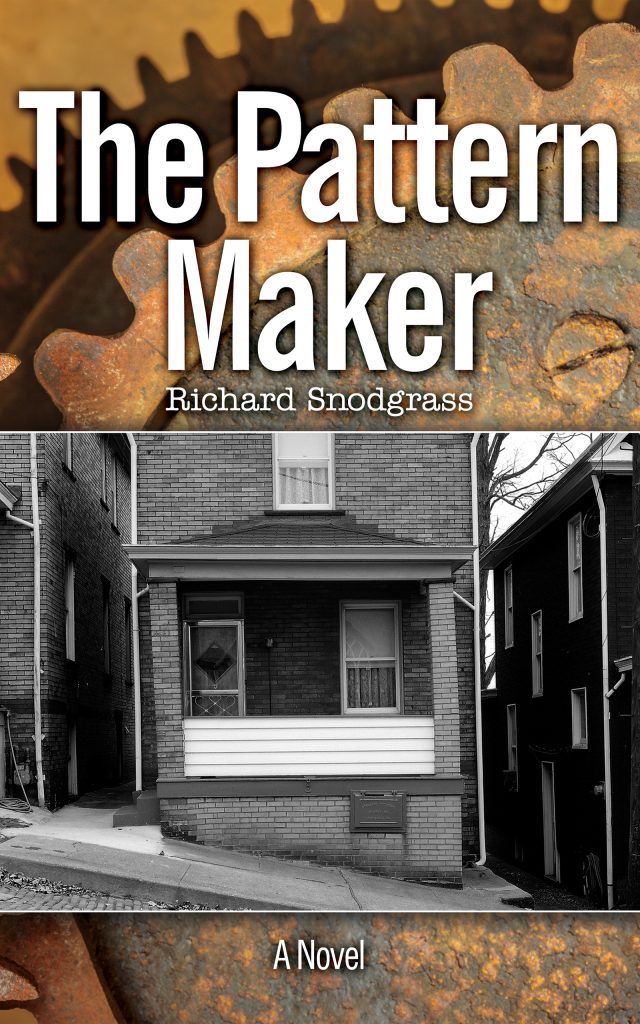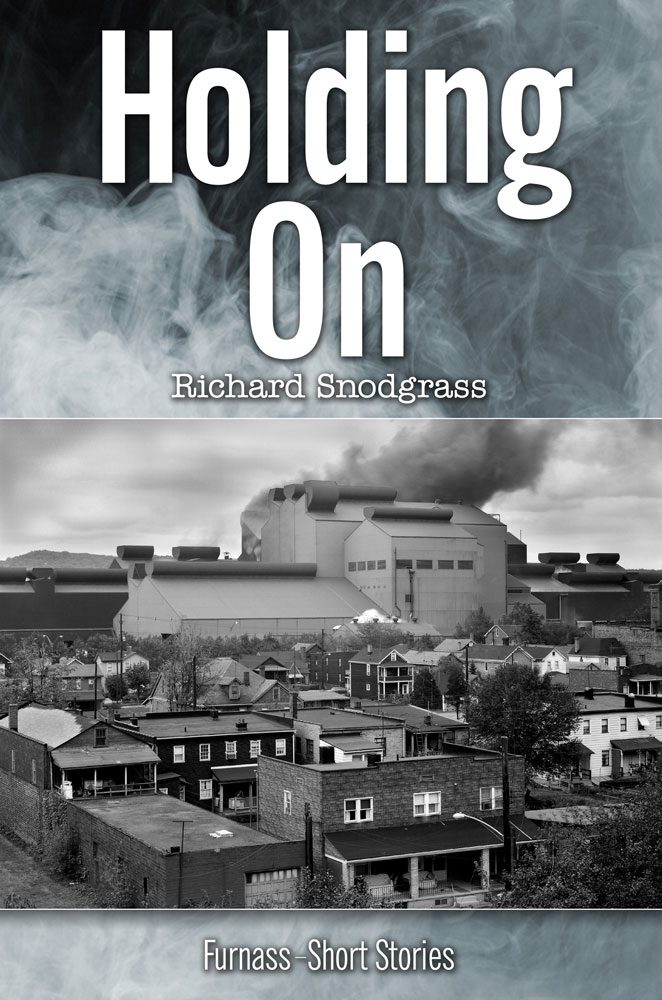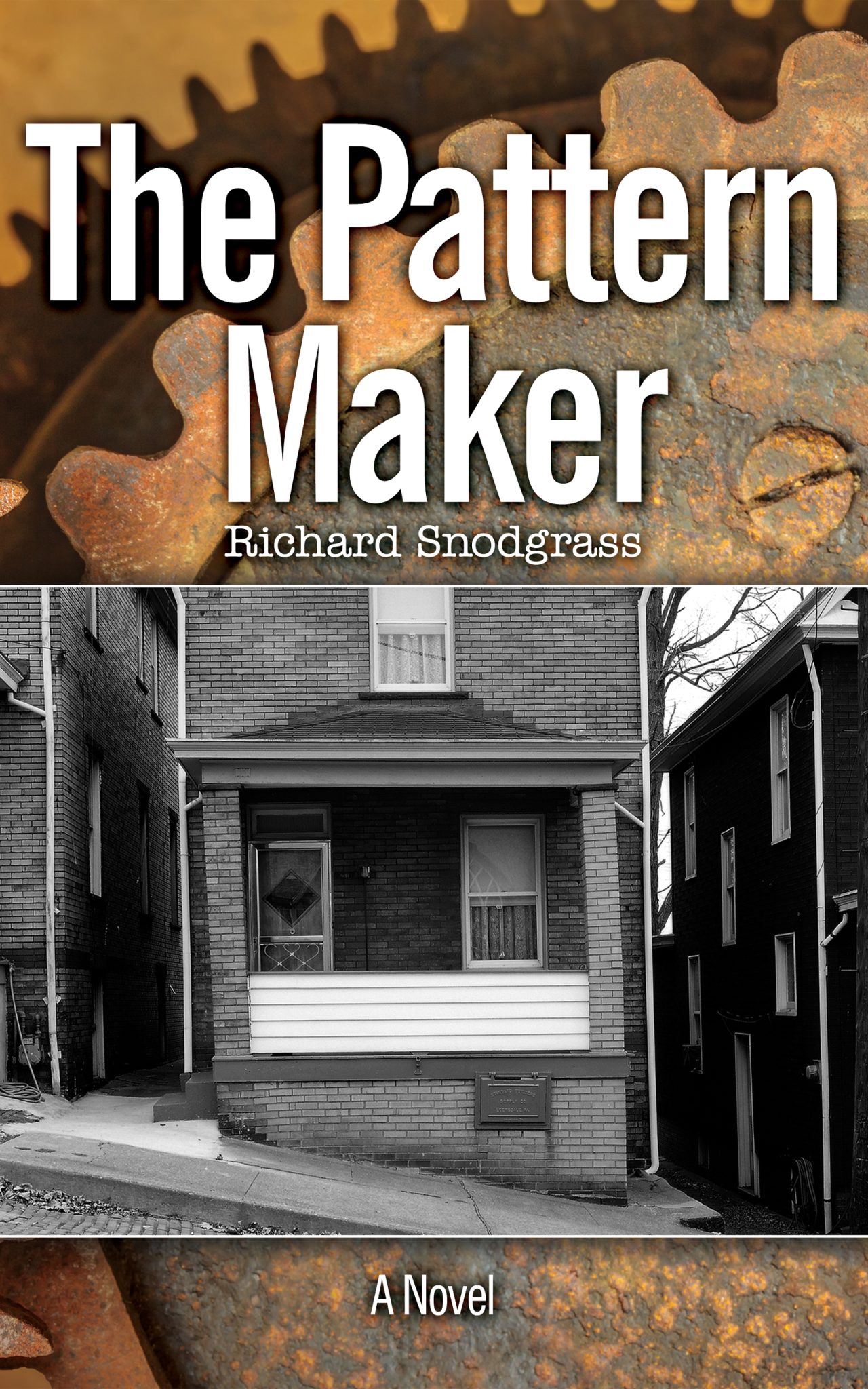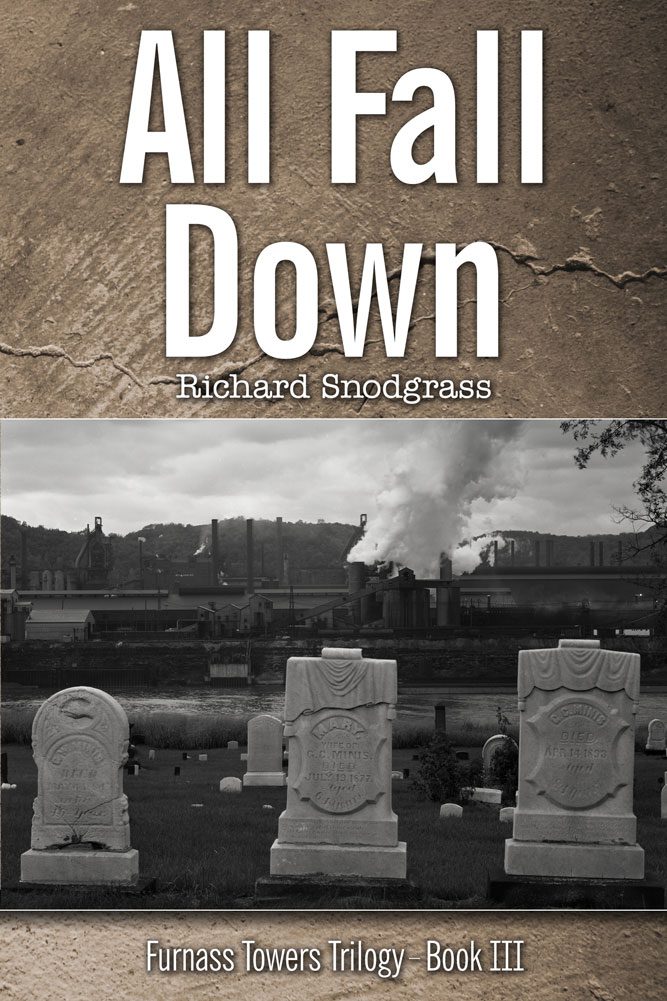The Pattern Maker
"Moving and impactful to the very end." - SPR
Paul Slater, a mill worker in Furnass and former Green Beret sniper in Southeast Asia, travels upriver ten miles to Pittsburgh for a little adventure. There in the city’s Golden Triangle, coincidence—or maybe Fate, or Blind Chance—take over. Paul’s path crosses that of a local hippie panhandler who acts as a spirit guide to the big city; he becomes infatuated with a pretty, blond intern with a movie company filming in town; and he unwittingly becomes a suspect in a number of recent murders. The story reaches its violent conclusion when perception takes the place of reality.

Videos
Reader’s Guide to THE PATTERN MAKER
Summary
Paul Slater is an ordinary man from small-town Furnass, Pennsylvania. He’s a machinist, a pattern maker, at the steel mill that lies at the town’s economic and emotional center. He served in Vietnam and married his high school sweetheart. But one day, guided by an impulse he doesn’t understand, he makes an unexpected turn while driving to work and ends up in downtown Pittsburgh, where he watches a movie being filmed on location. Befriended by a panhandler, an aging hippie full of folk wisdom, Paul returns over the next few days, entranced, among other things, by Suzy, an ambitious young intern on the film set. In his signature style of shifting perspectives and points of view, Snodgrass illuminates the inner worlds of the characters connected with the film, all of whom, like Paul, are at a turning point—the hot-tempered director, hoping to create his masterpiece; his long-suffering but quick-witted wife, starved for attention; a lonely, sensitive aspiring actor; and the police lieutenant investigating a murder that bears a striking resemblance to a scene in one of the director’s earlier films. Ultimately Paul’s world collides with the world of the big city in ways no one could have predicted. The Pattern Maker is both a page-turning drama and an affecting look at the desires of the human heart.
Questions and Topics for Discussion
- Have you ever been tempted to do what Paul did—start out for one place and follow your nose to a completely different place? If so, what was the experience like for you?
- Who is the real Suzy? Is it the well-read student of film history? The childlike innocent? The master manipulator?
- In making his films, Nicko was trying to show the link he perceived between sex and violence. Do you think such a link exists? Why or why not? And does Nicko’s explanation of the link, during his interview with Janet, ring true to you?
- What does Suzy’s motto, “Help yourself, tootsie,” mean to you? How does she act upon this motto throughout the course of the book? Do the other female characters subscribe to a similar philosophy?
- Furnass and Pittsburgh are as different from each other as night and day, yet they lie only ten miles apart. Why would a citizen of one place find the other so “foreign”? In what sense does geography dictate destiny?
- The Pattern Maker takes place in May of 1975. In what way are the characters products of their time? What other books—or what films—that take place during the same era cover the same themes?
- The omniscient narrator of the italicized passages occasionally reveals what’s going to happen in the pages that follow. Why do you think the author provides these revelations? How do they change your perception of the ensuing events?
- Paul, Nicko, Jeff, and Sam all seem to have violent fantasies of one sort or another. Do they come from the same source in each man? Or does something different in each man give rise to these thoughts?
- Why does Mac read bodice-ripper romances? What urge do they satisfy in him? What do they do for him?
- When describing Paul, Sam says, “He’s all the scarier because when you first look at him he looks normal. Then you realize he’s kind of supernormal. Too normal. There’s all kinds of stuff going on that you can’t see and he doesn’t want you to see.” Is this quality of being “supernormal” a red flag in real life? Should we be suspicious of people who seem “too normal”?
Reviews, Extra Scenes, etc.
Murder and mysticism weave within the turbulent times of the 1970s Rust Belt in Richard Snodgrass’ new novel, The Pattern Maker. Subtle thematic elements of media consumption and the blending of reality and fantasy swirl around a violent spate of murders in Pittsburgh, a troubled city with a strange allure and a powerful heartbeat that permeates these pages.
Paul Slater, the honorable center point of this story, is a restless mill worker who returns to his hometown of Furnass after years of haunting military service. Perennially ready to fight for the underdog and put his life on the line to save others, he is painted as a classic hero from the very start.
However, this ability to stand out in a crowd doesn’t always work in his favor, particularly when he spends his nights in the big city of Pittsburgh. It doesn’t take long for Slater’s path to cross with Suzy Two Quarters, an intern for a local movie shoot who works under a dictatorial director, as well as a truly bizarre panhandler named Sam who cryptically pops in and out of Slater’s late-night life.
While making his escapes to the big city allow Slater to flirt with a fantasy life, the gruesome murders begin to pile up, and the wrong type of attention turns his way. Having had more than enough violence in his past as a Green Beret to last a lifetime, Slater must wrestle with his own dark demons to clear his name.
Snodgrass patiently unspools this engrossing novel, allowing the storylines to brush up against one another, gradually forming a cohesive web of narrative that feels revelatory and romantic. The pieces of this novel initially seem disparate, but Snodgrass has impressive draughtsmanship skills and ties up loose threads in unexpected ways.
Trust is hard to come by in this gritty world, with fantasy and reality blurring in the story and the prose itself. Unique formatting, perspective jumps, and a variety of narrative tools make this novel feel utterly immersive. The landscape of Pittsburgh and rural Pennsylvania, with all its grit and stubborn tenacity, is a character unto itself, and Snodgrass once again proves his colloquial comfort and confidence in this small part of the world. Creating a visceral and consistent mood is no small task, yet this author has proven himself to be a master of transporting readers through time and space.
Though set in the seventies, the novel is a modern work to its core, boasting powerful themes that underpin much of the action and character development. Issues of gender and race relations, sexual violence and abuse, financial disparity, the collapse of industrial regions in the face of time and progress… all of these timely and pressing themes are addressed and unpacked in myriad ways through this dense and dramatic read.
Some of the plot points are predictable, and there is the occasional stock character thrown into the mix, but these slips are brief and few. Snodgrass makes readers sincerely care about his characters, willing us to invest in their fates and futures, and with multi-layered messaging supporting the narrative flow, The Pattern Maker is moving and impactful to the very end.
- Keep your sleeves rolled up; don’t wear a necktie; remove rings and watches around machinery.
- Don’t stick your fingers into moving gears.
- Put oil and not your other tools on your lathe.
- And keep your oil can some place where you won’t bend over and jab yourself in the eye with it.
- Ask questions only after you’ve considered what it is you want to know.
- Don’t play around with handles, levers, knobs in order to find out what they’re for. Know before you move something.
- Always investigate a squeak.
- If you make one mistake, don’t make a second mistake by trying to cover up the first one. The first mistake may be correctable; the second is unforgivable.
- If you do make a mistake, don’t do it again….























































